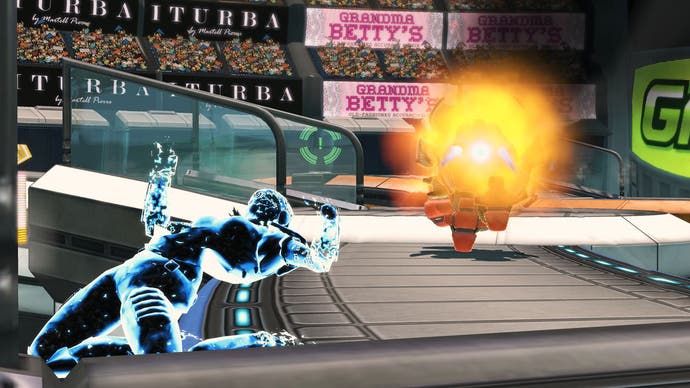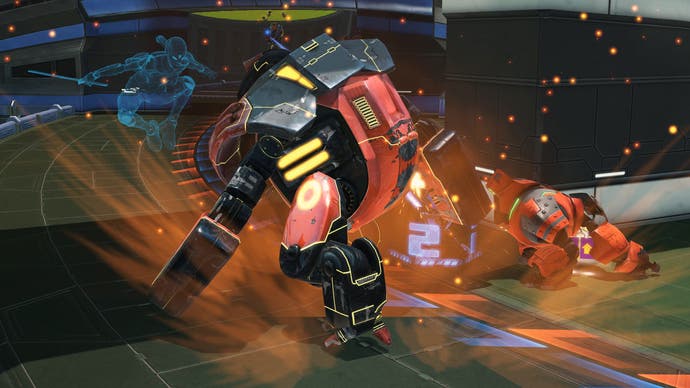Monday Night Combat
Desktop tower attack.
Tower Defense is gaming's youngest genre and it shows: endless waves of clones clog up iTunes, many as irresistible as their inspiration but few displaying much innovation. That's natural. Evolution requires a large gene pool before baby-step iterations begin to generate true diversification.
For that reason, Monday Night Combat's giant leap forward for the genre is exciting. It's like nothing seen before and yet, in its borrowing of game elements from a variety of other well-known titles, it's immediately familiar.
Monday Night Combat is built upon an orthodox Tower Defence foundation. This much is made obvious in the first of the game's two core modes: Blitz. All of the elements of the fixed path Tower Defence form are present here. Your base is known as the 'Moneyball', which you must protect from waves of enemy bots that approach it along fixed paths.
To fend off the attacks, you erect turrets in predefined build locations using what limited funds you have. They automatically fire upon attackers when anything enters their range, and can be upgraded using money you earn from the enemies they take down. Survive a set number of increasingly challenging waves without losing all of your Moneyball base points and the game is won. So far, so StarCraft mod.

The game's first innovation is in casting the player not as some disembodied mouse cursor, clicking on build points like an abstract strategy god, but rather as a soldier, on the ground, running in between and around the turrets and attackers. You essentially act as a turret with legs, able to line up shots on bots as in any third-person shooter, yet also tasked with running up to build points and erecting static turrets to provide back-up.
Your character, as well as packing two projectile weapons, has three unique abilities to use on the playfield. Each of these can be upgraded with money from felled bots. This introduces a new layer of tactical consideration: should you spend your resources on building new static turrets, upgrading existing ones, or turn yourself into a more powerful weapon? Who do you trust more: the AI, or yourself?
All of this is made yet more interesting by the fact the game supports up to four players working together. With six character classes to choose between, each with their own strength and weaknesses, the raw number of different factors in play dwarves that of most Tower Defence games, even as the core objective remains constant.

The game demands its players to organise themselves effectively, deciding who is going to cover which bot path, and on what element each member is to spend their money on. If a multiplayer version of Plants vs. Zombies combined with Gears of War's Horde mode sounds appealing then rest easy: you're home.
Blitz Mode, with its five challenges scaling from ten waves of attackers to infinity, is interesting and well balanced enough to stand alone. However, the package is elevated from fascinating to essential by the inclusion of Crossfire mode.
Here the fundamentals laid out by Blitz remain the same, except two teams of four players are pitted against each other. Now the task is a dual one: defend your base from the waves of enemy bots, and chaperone your own bots as they progress toward the enemy base.


